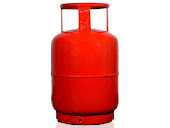Can we handle the muck?
MURPHY'S LAW - "anything that can go wrong, will go wrong" - seems to
be the operative rule in the Gulf of Mexico oil spill - Time Magazine
said in its latest cover story.
In view of the given skepticism about India's disaster preparedness,
the scale of the Mexico spill could arouse serious apprehensions -
after all the country has huge petroleum assets like the Bombay High.
There have already been leaks that were not handled at best, like in
Orissa and over five years ago off the Gulf of Kutch. Then, there is
the controversial Alang shipbreaking yard, Asia's largest, which has
often aroused concern over the toxic environment effects, though not
necessarily because of oil spills.
Nonetheless, India's oil sector majors claim they are well equipped.
FC Edge takes a look:
India's largest explorer Oil and Natural Gas Corporation (ONGC) claims
to follow all measures.
"ONGC has not experienced any such mishap in its history," said UN
Bose, director (technology and field services) of ONGC, referring to
the Mexico spill.
"ONGC has a health, safety and development vertical that takes care of
safety and preventive measures," he added.
There may be two kinds of oil spills, explains another senior official
of ONGC who did not want to be quoted. In Mexico, it happened because
of failure of dead man valve. It happened after a deepwater horizon
rig exploded, rupturing the well. A dead man switch is used to stop
the activity when human operations fail. In such a spill the immediate
step is to shut the source of oil. Then, the spilled oil can be soaked
with soaking pads if the volume is less or is flowed out using a
pipeline. So does ONGC have the technological wherewithal to tackle a
disaster of the scale in the Gulf of Maxico? Well, it may well claim
to be following the requisite safety precautions, what would be the
fallout when a disaster happens?
Preparing for the worst
The ONGC official said another spill occurs from leaks from tankers
anchored on the shore. India has experienced this kind of spill at the
eastern coast in Orissa. Such a spill is treated with microbes.
IndianOil (IOC) has developed oilivorous technology - (S) to clean oil
spills, said Anand Kumar, director (R&D) of IOC. The Energy and
Resources Institute (TERI) had developed the technology for treating
sweet crude spills. IOC developed it to treat sour crude, he said. Oil
sludge is generated during a spill. It is also seen during the process
of crude oil refining and storage in large tank farms. This oil sludge
is totally made ecologically friendly through bio-remediation within
60-90 days.
"The technology has been successfully used to remove recent oil spills
in Haldia," Kumar said. Generally, a blend of five microbes is
selected to bio-degrade a wide range of hydrocarbon contaminants.
Consisting of natural bacterial isolates, it is safer to handle and
has no disease causing organisms. It has excellent capability to
degrade wide range of hydrocarbon contaminants, including
organo-sulphur compounds and is totally environmentally safe. But it
works better on spills on land areas. Extending the same application
on aquatic or marine systems where the conditions are altogether
different in terms of nature of medium (microbes don't thrive and
survive very effectively in saline water) and concentration, requires
a focused approach and specialised application.
At present, IOC and TERI are working on an Indo-Australian joint
project to extend the scope of application of the technology on
aquatic and marine systems as India has a long coastal belt and many
sea ports that handle transportation of crude oil and petroleum
products. Ruias-promoted Essar Exploration & Production India (EEPIL)
is presently drilling at onshore locations.
"Among the land blocks where drilling is being carried out, EEPIL
charters rigs from contractors. The company carries out a rigorous
technical audit of these rigs to check pressure control equipment.
These rigs are also checked to ensure they operate optimally while
controlling the formation pressure. Periodic testing and safety
meeting is carried out while the rigs are operating." EEPIL said in
response to FC Edge's queries on their preparedness.
"In addition, the key people involved in running the rig operations
are carefully checked for competency training and relevant
certifications. An updated emergency response plan is also in place in
line with the operations carried out, to ensure safe operations,"
EEPIL added. Reliance Industries (RIL) did not respond to FC's
queries. Sourav Das, the official spokesman of Cairn India, the
operator of India's biggest onshore oil field in Rajasthan declined to
comment saying: "We cannot reveal details on our safety techniques for
security reasons."
The government has also notified safety rules for offshore operations.
Petroleum and Natural Gas Rules 2008 were promulgated and Oil Industry
Safety Directorate (OISD) was asked to administer them. OISD reviews
safety recommendations periodically and looks into any incident on
Indian territory.
Financial Chronicle, New Delhi, May 11, 2010
Read More...





